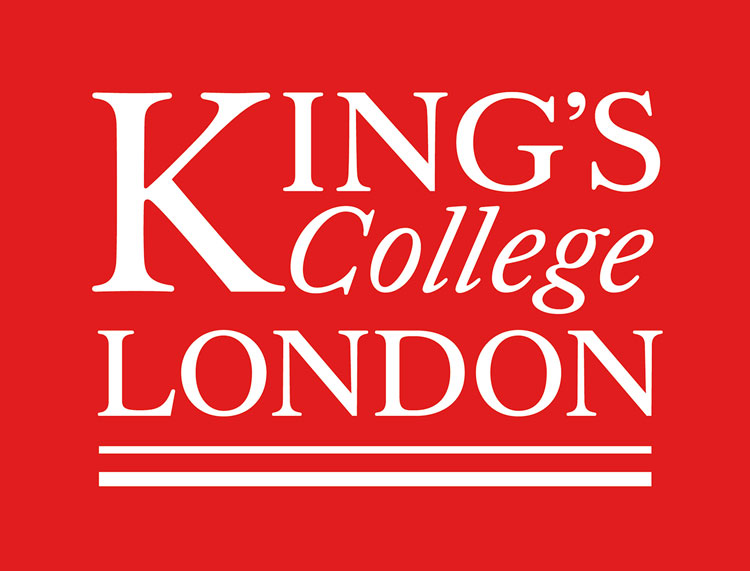How design can help universities both distinguish and unite their offering
We speak to designer Christine Ayre, who was recently made a Fellow of King’s College London, about how design can give a sense of coherency to institutions’ output.
“The challenge in university branding is that you’re trying to present a coherent visual identity for something that just has so many fantastically varied things going on within it,” says Christine Ayre.
Ayre is a designer with a background in linguistics and typography. For 15 years, she held roles as both head of brand design and head of corporate design at King’s College London.
In December 2020, Ayre was made a Fellow of the university for her services to its brand and design. The recognition is the highest award the university can bestow, and Ayre is only the fourth design-related appointment to the list in its more than 150-year history.
Her tenure at King’s saw her oversee several important projects for the university, including multiple iterations of brand guidelines, the selection of its now ubiquitous red colour, wayfinding and the well-known and loved window displays located on London’s Strand.

“A controlled yet flexible approach to branding”
As she explains to Design Week these projects, and many others like them, were hugely important to the university in terms of unifying its offering under one identity.
Design within universities – especially those that are multi-faculty establishments – is crucial, says Ayre. But branding such institutions is a “different kettle of fish” and requires a different approach compared with working with single-issue private sector companies.
King’s, for example, holds a distinguished and international reputation in several subjects, from medicine, midwifery and dentistry, to humanities, social sciences and law. The variety of its output requires a unified brand to connect the dots, but also one that allows each discipline to breathe, she feels.
“There’s real value for multi-faculty universities in having a controlled yet flexible approach to branding,” she says. “It’s important to be able to project something singular, distinctive and cohesive, but it’s also got to allow for more individual expression without diluting the parent brand.”
“Visible but not smothering”
There are several stakeholders to take into account for university branding, Ayre explains. The first and most obvious is the institution itself, which benefits from a comprehensive outward-facing identity showing off its “rich tapestry”. But beyond this, different departments and individuals working within them also need to be considered and supported.
Room to express oneself and discipline is vital. In her work at King’s, Ayre says a lot of her focus was on ensuring the university’s branding system wasn’t a “design straitjacket”.
“Within a university there are often leading experts whose field is global,” she says. “When talking to their peers around the world, they need to be able to leverage the university brand to promote their specific area as well as the university itself – whether they’re talking about astrophysics, forensics, contract law or Byzantine studies.”
As a rule, a university brand needs to be “visible, but not smothering”, says Ayre. Anything too constrictive runs the risk of people avoiding it altogether, since they feel they can’t present themselves and ideas the way they want to.

“Alert for new implementation requirements”
Overseeing a university’s brand and design system then is often an exercise in diplomacy, Ayre says.
“[It’s about] how to balance the needs of the university with the needs of the individuals,” she says. The most prized quality to make that work is the ability to listen and react to what people say they need, Ayre adds.
Additionally, providing people at all levels of the university with the tools and resources to utilise a brand allows them to have agency over their shared identity. In King’s case, Ayre says this involved created lots of templates and downloadable content for staff to use.
“I was always on the alert for new implementation requirements of our design system,” she explains. One such new implementation the team had to contend with last year was King’s-branded Zoom and Teams backgrounds. “When the pandemic hit, we discovered people were doing important interviews without branded background being available for them.”
“We needed more than just the most beautiful work”
While it can be a tightrope to walk, working in design within universities is a fruitful experience, Ayre says. Not least, it gives designers the chance to interact with and learn from people working in hugely varying fields. As she recalls, she was often treated to mini-lectures and explanations from many of King’s 8,000 staff.
And beyond the interior landscape of the university, Ayre says having the means to be able to work with and commission external designers was also a favourite part of the role. Indeed, she explains she “introduced a lot of discipline” to the design buying and commissioning process throughout her time, so as to ensure the university got the best people for the job.
“Firstly, to be able to work with a brand that was originally designed by Pentagram felt like an honour,” she says. But additionally, being able to work with designers like typographer Bruno Maag (of Dalton Maag) to move the identity on and into the digital age was a highlight, Ayre explains.
“I knew we needed more than just the most beautiful work – we needed work that was functional and effective as well as beautiful – and we were able to get so many wonderful people on our roster,” she says.

-
Post a comment





